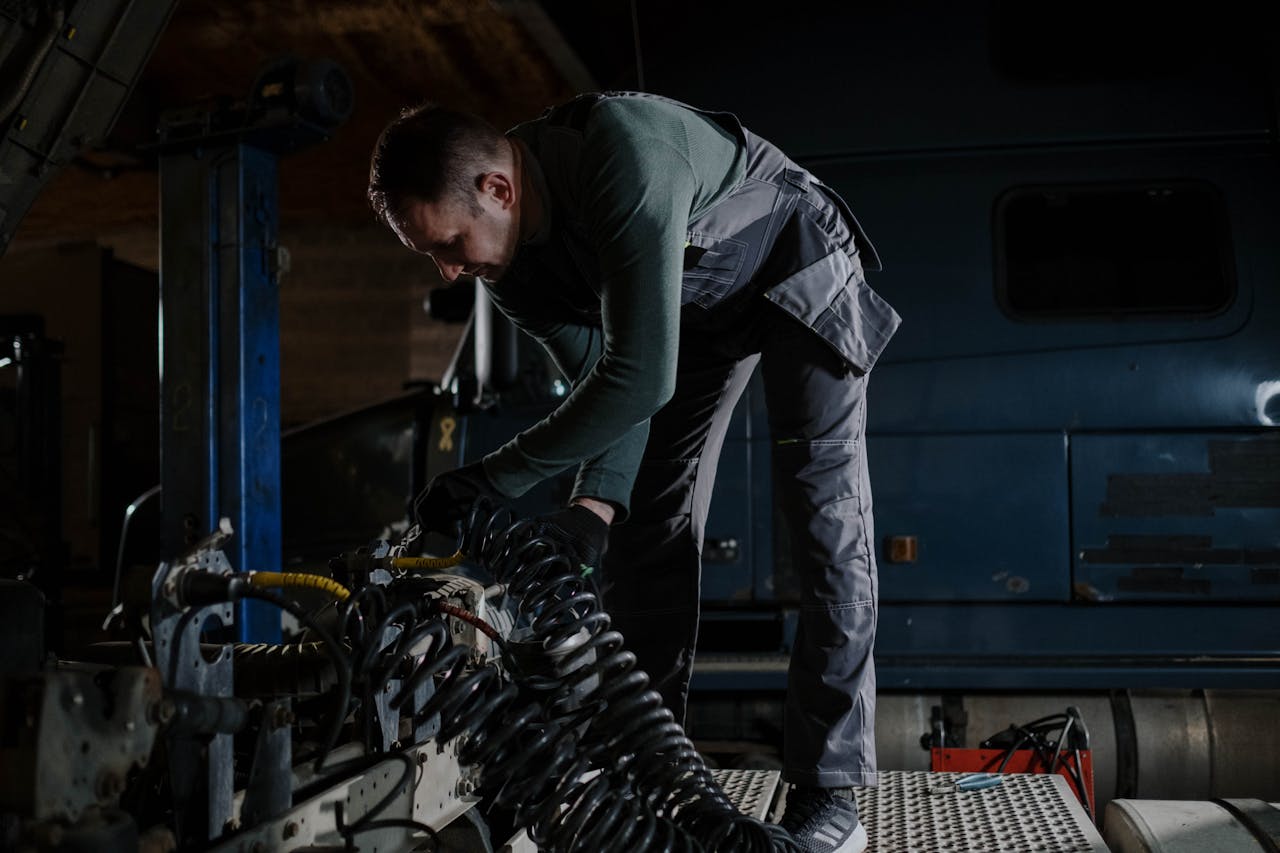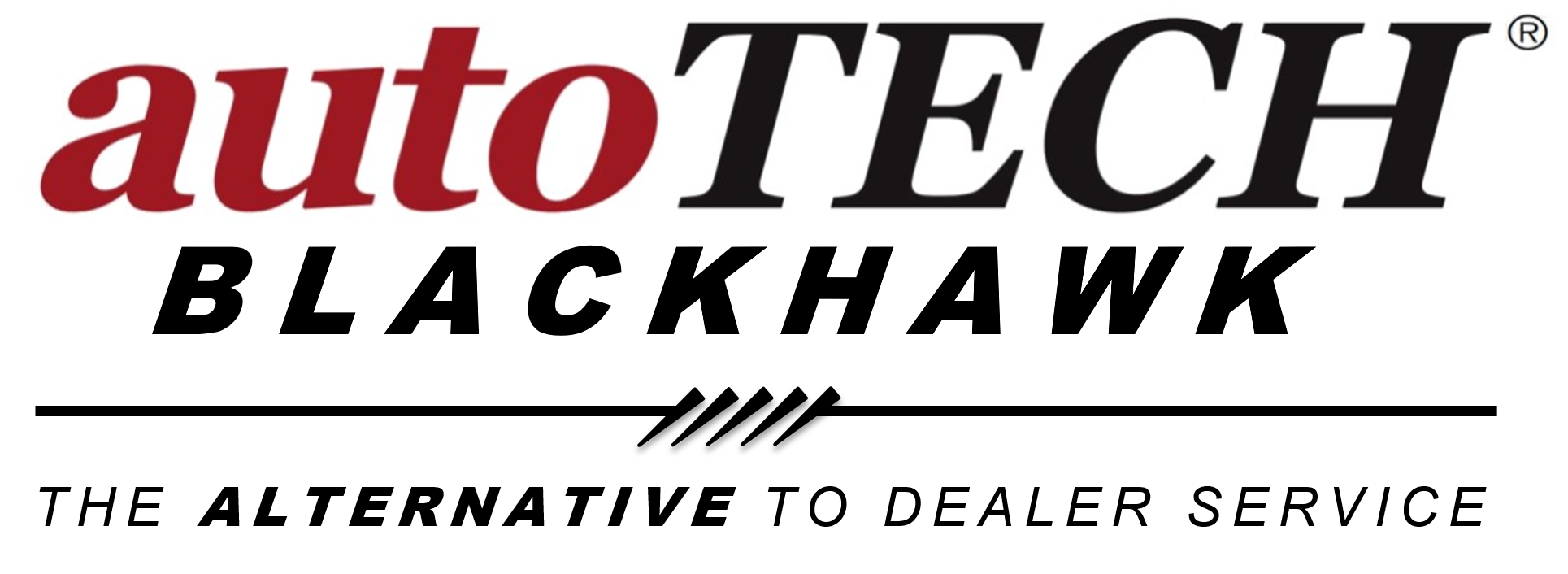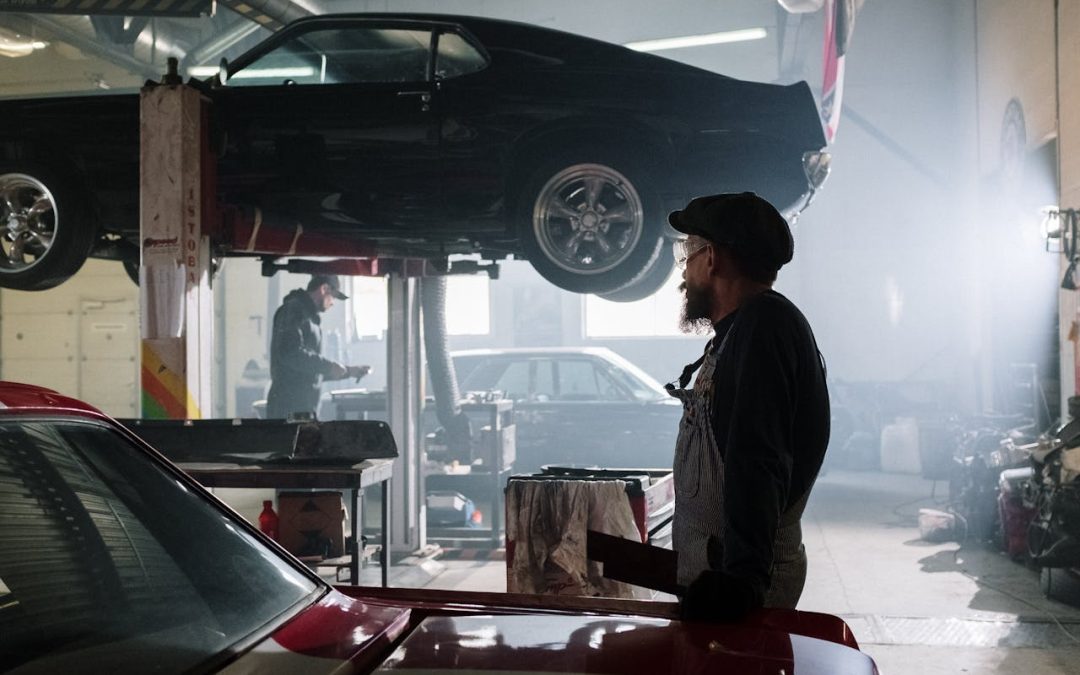Disc and drum brakes are the two primary types of brakes on cars currently, along with their parts and applications. Almost all new cars have disc brakes in the front — where heat control and stopping power are most critical — and drum brakes frequently operate on the rear wheels because they’re less expensive and tend to have a longer life in certain configurations. Knowing which one sits on your car matters for safety, service needs, and driving style. Disc brakes dissipate heat and repel water well, so you’re in good shape during a rainstorm or a hard stop. Drum brakes provide consistent force for a low price, but dissipate strength when heated. To view the actual effect on care and daily use, view each system’s pros and cons below in the following sections.
Key Takeaways
- Disc brakes offer better stopping power, heat dissipation, and all-weather performance, which is why they’re more common on newer vehicles and in demanding driving situations.
- Drum brakes are prized for their less complex design, cheaper initial cost, and excellent synergy with parking brake systems, which is why many cars have them on the rear wheels.
- Regardless of the type, proper maintenance and timely inspection are crucial for both disc and drum brakes for safety, performance, and longevity of brake components.
- Top-quality brake pads or rear drum-to-disc conversions can improve braking performance, such as for performance drivers or those who encounter particularly grueling conditions regularly.
- So, which is better — disc or drum brakes? It depends on your driving habits, vehicle type, and safety requirements, both from a technical perspective and in terms of cost.
- All of that is about to change, as future advancements in brake technology, from smarter systems to better materials, will continue to play a role in the global balance of performance, durability, and affordability for vehicle owners.
How Brakes Work
Every car requires brakes to decelerate and come to a halt. Brakes take your foot’s force, transforming it into pressure to halt the wheels. Today, cars use two main types: disc brakes and drum brakes. Both do so by pressing something against something moving to slow the car down or stop. The front wheels usually get disc brakes, as the front of the car is heavier with the engine, and the most stopping power is needed there. Drum brakes are on the back wheels. Both employ brake fluid to transmit pressure from the pedal to the brakes. If the system leaks or gets air, braking gets weak, so checks and maintenance matter a lot.
Disc System
Disc brakes utilize a metal disc, known as a rotor, that rotates with the wheel. When you hit the brake pedal, brake fluid pushes one or more pistons in the caliper, which in turn squeeze the brake pads against the rotor. This friction decelerates the vehicle. There are two main styles: floating calipers, which move from side to side to squeeze the rotor, and fixed calipers, which have pistons on both sides for a firmer grip. As mentioned earlier, fixed calipers commonly appear in sports cars where robust, evenly distributed halting force is required.
The rotor is typically cast iron; however, some utilize steel or even carbon-ceramic in race or high-end performance vehicles. Material is important because it affects how much heat the rotor can absorb before losing its stopping ability. Iron is great for regular cars because it’s rugged and inexpensive. Carbon-ceramic can take more heat and wear much longer, but costs far more. It just depends on how hard and how frequently the brakes are applied.
Disc brakes respond quickly and provide consistent stopping even under repeated use. They were great at shedding water and heat. Dirt, water, and heat are flung away from the rotor as it rotates. This self-cleaning means they perform better in rain or mud, and are less likely to ‘fade’ – which is when brakes lose grip after numerous stops in a row.
Drum System
Drum brakes employ a round drum that rotates with the wheel. Inside, two brake shoes and one or two pistons in a wheel cylinder. When you depress the brake pedal, fluid actuates the pistons. The pistons then push the shoes outward until they contact the inside of the drum, creating friction that slows or stops the wheel.
The drum system is basic and has been in existence for many decades. It requires fewer parts than most disc brakes, which may make it less expensive. Drums used to be on all of the cars, but now they’re mostly just on the back wheels of smaller cars or trucks.
Drum brakes have their vulnerabilities. They can heat u, and fade in power after many stops, known as brake fade. They can trap dirt and water inside the drum, which makes them slow to work when wet. They don’t dissipate heat, nor do they self-clean, like disc brakes. This renders them less suited for high-speed driving or heavy loads.
Hydraulic Pressure
Both brakes use hydraulic fluid to transmit the pedal force to the brakes. This fluid flows through lines and hoses, forcing pistons at each wheel.
Leaks or old fluid can make the pedal feel soft or create slow stops. Cars have their oil changed every few years and are checked at least once a year. Indicators like strange brake noises or odors can signal issues with the system.
Disc VS. Drum Brakes Compared
Disc vs. Drum brakes – different approaches, different materials, to slow a car. Their fundamental components and operation alter the way your vehicle halts, how it endures, and what you spend to maintain it. Both types of brakes appear on cars around the world, sometimes coexisting—disc in front, drum in rear. Technology and design matter for both, but so do basic, frequent inspections to protect them.
Stopping Power
Disc brakes shine when things get fast. Their hydraulic configuration requires less pedal pressure, and the pads squeeze the rotor quickly. This bite provides additional stopping power. Drum brakes slow the car by pushing shoes out against the inside of a spinning drum. That does work, but it distributes force less uniformly. A disc system manages repeat stops better, maintaining power even if you brake hard many times. Pad quality counts as well–a worn or low-grade brake pad slashes performance, regardless of the system. Good pads will keep your stops short and steady.
Heat Management
Disc brakes cool faster than drum brakes. The open rotor allows air and heat to pass through quickly, so the brakes continue to perform even after extended or steep descents. Drum brakes, enclosed by design, can trap heat. Too much heat equals ‘brake fade’–it makes the pedal feel spongy and increases your stopping distance. Heat makes parts wear out faster. Disc brakes frequently add slots or holes in the rotor to assist heat escape even further, extending the parts’ service life.
Drum brakes can be fine for slow, short trips, but in cities or hills, heat will build fast. If you drive in congested areas or frequently travel down long grades, disc brakes will probably be more durable and perform better.
Wet Conditions
Disc brakes spin water off the rotor with every revolution, so they bite well in wet weather. Drum brakes water traps in there, and when wet, they can slip or delay your stop. Good wet braking is key for safety, so disc brakes fare better in rain or when roads are soaked.
While brake design keeps water out or lets it drain, disc brakes still triumph for wet grip.
Maintenance & Cost
Drum brakes typically last longer between changes, but they’re more difficult to service. Disc brakes are easy to inspect and replace. Parts for disc systems can come at a higher price, but the quick service cuts labor. While both need to be inspected annually or at 20,000 km, disc brakes can spell less downtime over a span of years.
Durability & Lifespan
Disc brakes, with rugged rotors and pads, resist hard use. Drum brakes last longer in light use but wear fast if pushed hard. Material quality and road use are what’s most important. Routine maintenance, such as pad replacements, maintains both brake types.
Disc Brakes:
- Pros: Stronger stop, good in rain, easy to check, cools fast
- Cons: Cost more, pads wear out faster if used hard
Drum Brakes:
- Pros: Cheaper, lasts long in low-demand use, simple tech
- Cons: Weaker in wet, fades with heat, harder to fix
Why Your Car Has Both
Why do car manufacturers mix disc brakes up front and drum brakes in the rear? This configuration isn’t accidental. It’s defined by physics and cost, and what drivers require from a car. When a car decelerates, the majority of its weight shifts to the front. This causes the front brakes to do approximately 70% of the work. Disc brakes, which sit at the front on most cars, are better at stopping quickly. They cool down faster and provide a more immediate sensation at the pedal. On average, cars with discs in front can stop in 17% to 33% less room than if they carried drums all around. That’s why you have discs up front on sedans, hatchbacks, SUVs, and even a lot of trucks.
Drum brakes are typically rear. They do less work—just 30% of braking. They’re not there just to save money. They last long – in some cases, up to 200,000 kilometers – and are cheap to manufacture and repair. For the majority of drivers out there, particularly in everyday urban or highway driving, this is plenty. That’s why economy cars, and even a few family cars, remain with drums at the rear. Drums have been around cars for more than a century now, and the concept has remained largely unchanged. They just function, and they keep prices down for auto manufacturers and consumers equally.
Varied brake types assist balance performance, safety, and cost. Sports cars will frequently have discs on all four wheels. They require optimal stopping power for hard stops and hard driving. For the vast majority of day-to-day cars, haymaking discs and drums blend beautifully. The discs up front provide crisp stopping power and a solid pedal feel. The drums in the back maintain both low running costs and still do their part for safe stops. Cars, trucks, and vans all have this hybrid setup because it fits a lot of requirements and budgets.

The Parking Brake Factor
The parking brake is an important feature of a car’s safety system, but it tends to be overshadowed by the primary brakes. Its primary purpose is to hold the vehicle stationary when parked, which is essential on inclines or uneven terrain. The functionality of parking brakes varies based on the type of brake system—either drum or disc—equipped on the vehicle. Each class lends its power and boundaries to this role.
Drum brakes are in many vehicles out there, particularly on the rear wheels. Give them some actual parking perks. Their design allows the brake shoes to press outwards against the drum, something that can keep a wheel locked even when a car is at rest for an extended period. This is why drum brakes are a favorite for parking brakes, particularly in cars where price and easy serviceability are factors. There’s just a simple cable from the lever or pedal to the drum, so there’s less that can break. Some key advantages of drum brakes for parking brake use are:
- Firm holding on slopes, good for most everyday requirements.
- Simple design that is less likely to fail.
- Lower service and repair costs.
- Good performance in cold or wet weather.
Even with these, disc brakes are now ubiquitous on many new cars, since they provide better stopping and cooling. They’re capable of providing firm parking holding as well, but in some configurations employ a small drum brake within the rear disc, or a dedicated caliper with a cable. This is because disc brakes, excellent at stopping a car quickly, are not designed to hold a car still for long periods of time since the force they apply distributes over a smaller surface area. Still, in areas with tougher safety regulations, parking brakes are required to hold the vehicle on a designated slope, which places greater demands on the system’s construction and maintenance.
The parking brake is a real lifesaver. It prevents rollaway incidents, which occur when primary brakes malfunction or drivers neglect to engage park or gear. Routine exercise prevents the mechanism from corroding or seizing, and inspections for damage or inefficiency can prevent failures before they become dangerous. For those who park on steep inclines frequently, ensuring the parking brake is in tip-top shape becomes even more critical.
Beyond The Factory
Brakes are much more than what the manufacturer standardizes. Whether a car has disc or drum brakes is a matter of design, safety requirements, and price. Upgrade, conversion, and customization brake options allow drivers to tailor their systems to their driving style and environment. New technology still defines the future of automotive braking.
Upgrades
- High-performance brake pads
- Slotted or drilled rotors
- Stainless steel braided brake lines
- Lightweight calipers
- High-temperature brake fluid
Quality aftermarket brake pads and rotors can change how your car stops, making the brakes crisp and dependable. Premium pads use heat-dispersing compounds, and slotted rotors sweep away dust and gas, keeping brakes responsive. Aluminum or carbon fiber calipers are lightweight as well and reduce unsprung mass, which aids steering and handling. Stainless steel brake lines minimize flex, allowing drivers to feel the brakes more directly. No matter what upgrade you’re picking, it’s key to verify parts drop into the system and the car. Not every pad, rotor, or line will play well together; mismatched pieces can be trouble.
Conversions
As are upgrading rear drum brakes to discs for dailies and sports cars. This time it means trading drums for calipers, rotors, and new lines. Disc brakes are hydraulics, much like automotive brakes, so less pedal force is required, and stopping power increases. Safety gets better, as well, as discs can cool faster and perform better in wet conditions.
Conversions cost more immediately—sometimes a few hundred dollars or more—but can save money by requiring fewer fixes. Owners ought to verify if their car supports such a swap, given that not every design enables an easy bolt-on conversion. Labor and part costs vary, so it’s important to budget accordingly and work with a trusted local technician to ensure proper fitment and installation.
Future Brakes
New brake tech is perpetually in the works. Carbon-ceramic rotors, once the exclusive domain of racing, are appearing in premium street cars. Electric and hybrid vehicles employ regenerative braking, mashing the new and old together to optimize energy consumption. Smart sensors and automation could result in brakes that modulate themselves according to road or weather conditions.
As materials become lighter and stronger, brakes can last longer and perform better. Add-ons such as electronic parking brakes and brake-by-wire result in less hardware, more software at every stop.
What Matters To You
The type of brakes on your car genuinely affects your driving style, your sense of security, and even your expenditure in the long run. Your driving habits dictate which brake system suits you best. If you drive primarily in urban areas, with frequent stopping and starting, disc brakes on the front wheels are beneficial since they cool more quickly and manage heat more effectively. For drivers who do a lot of highway driving or operate in less congested areas, drum brakes in the rear could be sufficient as they tend to last longer, sometimes up to 200,000 miles. Consider how you drive daily, and you’ll understand why one kind may be preferable to the other.
Your car’s body style further influences what brakes it needs. Lighter cars or compacts are usually okay with drum brakes on the rear axle because they don’t require as much stopping power at the back. Heavier automotive vehicles, such as SUVs or trucks, generally require disc brakes in the front only, as those wheels are responsible for the majority of stopping. The front of a car is roughly 10% heavier because of the engine, so disc brakes up front are logical for improved control and reduced stopping distances. Most cars have two front and two rear brakes—disc in front, drum in the rear is a popular combination.
Safety is always a foremost issue. Disc brakes allow you to stop faster and more controlled, even in wet or rough terrain. There’s less of a chance to wear out under hard use, which is important if you frequently mountain drive or tow heavy loads. While drum brakes tend to lock up if you push them too hard, they do well for consistent, lighter applications. Check for symptoms of problems such as weird noises, burning odors, or a change in brake feel. These signify you should check your brakes immediately.
Understanding the strengths and weaknesses of each assists you in selecting what works. Disc brakes require new rotors approximately every 24,000 to 112,000 kilometers, while drum brakes last much longer. Both require brake fluid changes every couple of years. Consider what type of driving you do, your vehicle’s requirements, and your budget.
Conclusion
Brakes are a lot more than just something that stops a car. Disc and drum brakes both have a purpose. Disc brakes cool quickly and provide powerful, consistent stopping. Drum brakes are cheaper and function fine for gentle stops and as a parking brake. Most cars have a mix of both for optimal use and cost. Roads, habits, and budget all contour what best fits you. A lot of people convert to discs for superior stopping power or simpler maintenance. Others keep drums around to reduce cost. Both require good maintenance to perform properly. To keep you safe on the road, inspect your brakes and repair them immediately if you find an issue. Tell us your break tale or pose a query in the comments below. Your advice guides others’ savvy selections as well.
Frequently Asked Questions
1. What Is The Main Difference Between Disc And Drum Brakes?
Disc brakes employ a flat, round disc and a clamp to halt the wheel. Drum brakes utilize a drum and brake shoes. Disc brakes tend to perform better.
2. Why Do Modern Cars Have Both Disc And Drum Brakes?
A lot of cars have disc brakes in the front (for stronger braking) and drums at the rear (to save cost and for great parking brakes).
3. Are Disc Brakes Better Than Drum Brakes?
Disc brakes are superior in terms of stopping power, heat dissipation, and performance, particularly in wet weather. Drum brakes are cheaper and fine for rear wheels.
4. How Do Brakes Work To Stop A Car?
When you step on the pedal, it uses hydraulic pressure to push pads or shoes against a disc or drum, which creates friction and slows the wheels.
5. Does The Type Of Brake Affect The Parking Brake?
Yes. Drum brakes usually come with an integrated parking brake, whereas cars equipped with rear discs might have a separate system.
6. Can I Upgrade Drum Brakes To Disc Brakes?
A lot of cars had drum-to-disc brake conversions available. This upgrade can make your brakes more effective, but might necessitate new components and expert service.
7. How Do I Know Which Brakes My Car Has?
Consult your car manual, or just peek behind each wheel. Discs are flat and exposed, and drums are enclosed. Your vehicle’s specs will list the brake types as well.
Need Brake Repairs You Can Truly Rely On?
When it comes to your safety, don’t settle for average. At autoTECH Blackhawk, we specialize in high-performance, precision brake repair backed by experience and trust. What sets us apart? We’re not just about fixing cars — we’re about building real relationships with our clients and keeping your vehicle running safely for the long haul.
From squeaky brakes and soft pedals to full rotor and pad replacements, our expert team handles it all with care and precision. You’ll get peace of mind with our industry-leading 3-year/36,000-mile warranty, plus the confidence of knowing we only use top-quality, manufacturer-recommended parts.
Your brakes keep you safe — let’s make sure they’re ready for anything.
Call our friendly team today to book your contactless brake repair consultation. Let’s get you back on the road, worry-free.


